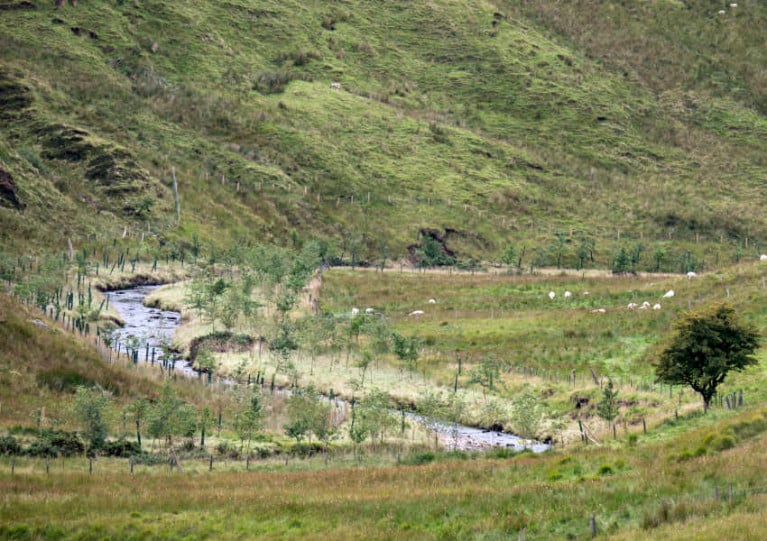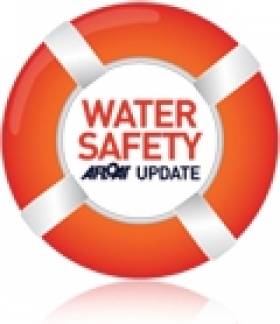Displaying items by tag: River Roe
Successful Deployment of Underwater Cameras to Capture Salmon Spawning in River Roe
As part of the Loughs Agency’s annual redd counting on the River Roe and its tributaries in Northern Ireland, underwater cameras were successfully deployed and have captured footage of salmon spawning activity.
Mark McCauley, freshwater fisheries biologist with the agency, said the footage shows some of the “varied and complex” lifecycle of the salmon.
“A female salmon begins to deposit her eggs in a redd as an adult male moves alongside to fertilise them. A female salmon produces approximately 1,100 eggs per kilogram of body weight,” he said, describing the footage.
“The male has a very distinctive hooked lower jaw called a kype. This is a characteristic displayed by adult males at spawning time. It is assumed to establish hierarchy among males, with those displaying larger kypes thought to be more dominant.
“The female then uses her tail to cover the fertilised eggs with gravel.
“The footage shows a parr moving over the area quickly afterwards, probably hoping to eat any eggs that are not covered before being driven off by the larger male.
“There are some instances of precocious parr, sometimes referred to as sneaker males. These are sexually mature salmon parr who will try to fertilise some of the eggs in an attempt to pass on some of their genes.
“This is all part of the varied and complex life-history strategies of Atlantic salmon.”
Spawning is a sensitive time of year for returning salmon and any disturbance can take them off the redd. Redds can also be damaged if stepped on. Therefore, the Loughs Agency advises against members of the public entering the river to view this activity.
Loughs Agency Removes 3,000 Plastic Tree Guards From Roe Valley
Between 2012 and 2014, each spring the Loughs Agency — in partnership with Woodland Trust and with the agreement of local landowners — planted 10,000 mixed-species native trees along both banks of the River Roe in Northern Ireland.
This section of the Roe, in the upper Glenshane area of Co Derry, holds good populations of salmon and trout and a varied mixture of habitat for fish of all ages, the Loughs Agency says.
However, surveys highlighted that the riparian zones on both banks were devoid of tree cover, with only small numbers of coniferous pine trees present.
Riparian tree planting undertaken by the Loughs Agency sought to address several issues:
- reduce runoff from the surrounding hills, thus reducing in-stream sedimentation and the threat to salmonid redds;
- stabilise the riverbanks; and
- slow the flow in the upland area, thus helping to reduce the potential of flooding downstream
Given current trends for prolonged dry spells in summer, the trees will provide valuable shade along the riverbank and a much-needed cooling effect during these times.

Fallen leaf litter will help increase populations of in-stream bug life for fish to prey upon. In addition, the trees provide a much-needed biodiversity corridor in this upland area.
Loughs Agency chief executive Sharon McMahon said: “In a climate of ever-increasing pressure upon the environment and natural resources, these schemes meet Loughs Agency's core responsibility of protecting and conserving freshwater fish stocks.
“They also help protect rivers, slow the flow, capture carbon. and provide an aesthetically pleasing biodiversity corridor adjacent to one of our most travelled routes.”
During planting, tree guards were put in place to protect young saplings from sheep, hares and deer. In this exposed environment, the guards also protect the trees from the elements.
Now that the trees are maturing, and the left-hand bank of the riparian zone has been fenced off since 2019, earlier this month the Loughs Agency completed the process of removing these plastic guards and over 3,000 were sent for recycling.
The works continue enhancements of the River Roe that have benefitted from an £80,000 investment since 2019, as previously reported on Afloat.ie.
Loughs Agency Invests £80k in River Roe Enhancement Projects
Over £80,000 has been invested in habitat enhancement projects in the River Roe catchment area in Co Derry during the past two years, the Loughs Agency says.
More than 20 sites within the Roe catchment were prioritised by the agency as a result of an assessment process conducted with habitat surveys and local angling club engagement.
Investment since 2019 included installing 6,500m of riparian fencing along the Bovevagh, Castle, Lynn, Owenbeg and Woodburn rivers and adjacent to the main River Roe itself.
Native trees planted previously to increase tree cover in the Roe’s upper reaches have been pruned to encourage growth, and around 4,000 tree guards were removed.
Instream works were also completed in the headwaters to ensure suitable spawning habitat for salmonids.
This is regarded as an area of special scientific interest (ASSI) because of the river’s physical features and its associated riverine flora and fauna. It is noted in particular for the population of Atlantic salmon, which is of international importance.
Riparian fencing, tree planting and associated works will improve water quality with increased bank stability and reduced erosion risk, the Loughs Agency says.
‘At a time when our rivers generally are under threat, this work will hopefully prove its worth in the years ahead and help sustain this valuable resource’
Biodiversity support, protection of invertebrates and indigenous fish populations in the River Roe and its tributaries are all key features of ongoing river restoration in the catchment area, it adds.
Roly Wysner, fishery inspector at the Loughs Agency, said: “The positive engagement between Loughs Agency and landowners cannot be understated.
“We worked with landowners who were very willing to participate and understood the rationale for the installations. They appreciated how it would feed into achieving sustainable management of both the riparian and aquatic habitats.”
Local club Roe Angling Ltd also welcomed the projects. A spokesperson said: “At a time when our rivers generally are under threat from a number of sources, this work by Loughs Agency will hopefully prove its worth in the years ahead and help sustain this valuable resource.
“The success of this programme is also indicative of the positive relationship that exists between Loughs Agency and landowners.”
The Loughs Agency’s Habitat Improvement Strategy outlines works associated with conserving, protecting, and improving the abundance and distribution of wild salmon and trout in Foyle and Carlingford’s freshwater catchments.
For more information on Loughs Agency’s habitat enhancement work or to read the full case study for the Roe catchment, visit the habitat section of the Loughs Agency website.
Derry Drowning Brings Heatwave Water Death Toll To Seven
#WaterSafety - Water safety chiefs have yet again underscored the dangers of swimming in unsupervised areas after a teenager drowned in Co Derry yesterday afternoon.
The Irish Times reports that the 15-year-old boy was airlifted to hospital by police helicopter after getting into difficulty when he fell into the River Roe.
The as yet unnamed teen is the seventh drowning victim on the island of Ireland during the current heatwave.
Last week alone saw five drownings of young people, prompting Irish Water Safety CEO John Leech to make a public appeal for awareness of the dangers of swimming in areas without lifeguards, especially in open water.
“One of the reasons we’re losing all these youngish people is because a whole generation haven’t learned to swim in open water,” said Leech, who added that 32 per cent of victims have consumed alcohol.
The Irish Times has more on the story HERE.





























































